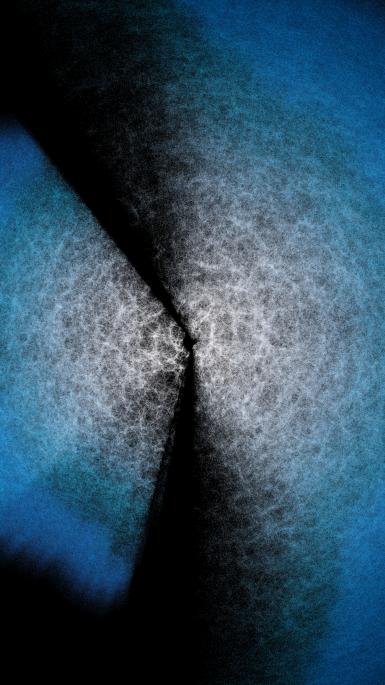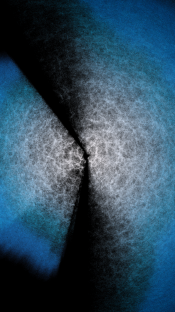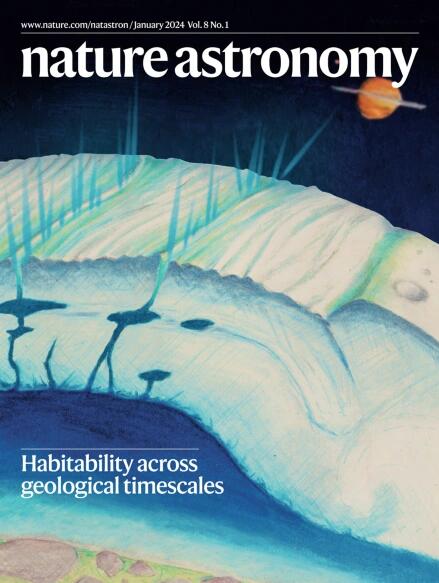Looking beyond lambda
IF 14.3
1区 物理与天体物理
Q1 ASTRONOMY & ASTROPHYSICS
引用次数: 0
Abstract
Widening cracks are appearing in the Λ cold dark matter (ΛCDM) model (where Λ is the cosmological constant) and it is becoming increasingly clear that the standard cosmological model struggles to describe the full expansion history of the Universe as revealed by the cosmic microwave background, baryon acoustic oscillation measurements, and locally calibrated type Ia supernovae. Taken at face value, recent results suggest a dark sector that may be more complex than commonly assumed. We must prepare for the possibility of moving beyond the ΛCDM era, where merely testing if the dark energy equation of state w = −1 is no longer sufficient, and embrace the challenge of unravelling the physics of dark matter, dark energy and gravity on cosmic scales. Guided by increasingly robust data—secured through considerable investment—we should pursue deeper understanding while being open to complexity in the dark sector, rather than settling for the simplest phenomenology. Data from new facilities and a new Dark Energy Task Force could help illuminate the path forward while changes to our scientific practices will be essential to navigate the potentially rocky road ahead. The Dark Energy Spectroscopic Survey’s latest results indicate a tension between observations and the cosmological constant model of dark energy. This Perspective puts these findings in context and suggests a way forward for dark energy research.


超越lambda
在Λ冷暗物质(ΛCDM)模型(Λ是宇宙常数)中出现了越来越大的裂缝,越来越清楚的是,标准的宇宙模型很难描述宇宙的完整膨胀历史,正如宇宙微波背景,重子声学振荡测量和局部校准的Ia型超新星所揭示的那样。从表面上看,最近的结果表明,黑暗行业可能比人们通常认为的要复杂得多。我们必须为超越ΛCDM时代的可能性做好准备,在这个时代,仅仅测试状态为w = - 1的暗能量方程是否已经不够了,我们必须接受在宇宙尺度上解开暗物质、暗能量和引力物理学的挑战。在日益强大的数据(通过大量投资得到保障)的指导下,我们应该追求更深入的理解,同时对黑暗领域的复杂性持开放态度,而不是满足于最简单的现象。来自新设施和新暗能量特别工作组的数据可以帮助照亮前进的道路,而改变我们的科学实践对于导航前方可能崎岖不平的道路至关重要。
本文章由计算机程序翻译,如有差异,请以英文原文为准。
求助全文
约1分钟内获得全文
求助全文
来源期刊

Nature Astronomy
Physics and Astronomy-Astronomy and Astrophysics
CiteScore
19.50
自引率
2.80%
发文量
252
期刊介绍:
Nature Astronomy, the oldest science, has played a significant role in the history of Nature. Throughout the years, pioneering discoveries such as the first quasar, exoplanet, and understanding of spiral nebulae have been reported in the journal. With the introduction of Nature Astronomy, the field now receives expanded coverage, welcoming research in astronomy, astrophysics, and planetary science. The primary objective is to encourage closer collaboration among researchers in these related areas.
Similar to other journals under the Nature brand, Nature Astronomy boasts a devoted team of professional editors, ensuring fairness and rigorous peer-review processes. The journal maintains high standards in copy-editing and production, ensuring timely publication and editorial independence.
In addition to original research, Nature Astronomy publishes a wide range of content, including Comments, Reviews, News and Views, Features, and Correspondence. This diverse collection covers various disciplines within astronomy and includes contributions from a diverse range of voices.
 求助内容:
求助内容: 应助结果提醒方式:
应助结果提醒方式:


